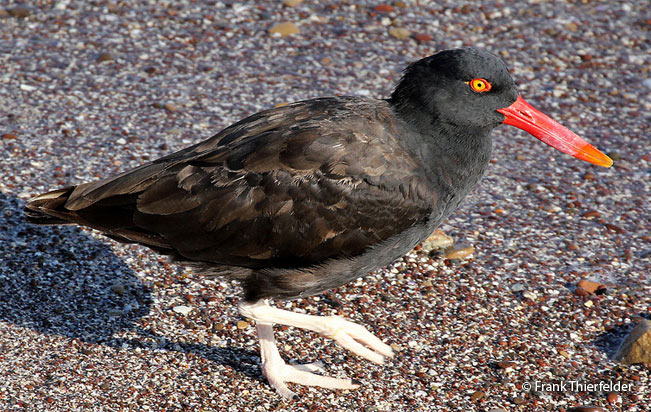Order: Charadriiformes | Family: Haematopodidae | IUCN Status: Least Concern

Age: Adult | Sex: Unknown | Loc. Paracas Peninsula, Ica

Age: Juvenile | Sex: Unknown | Loc. Paracas Peninsula, Ica

Age: Adult | Sex: Unknown | Loc. Pucusana, Lima

Age: Adult | Sex: Unknown | Loc. Paracas Peninsula, Ica
Identification & Behavior: ~44.4 cm (17.4 in). The Blackish Oystercatcher is slaty-black with brownish-black wings and back. It has a long blood-red bill and pale legs. The sexes are similar in appearance. The large heavy bill is used to pry open bivalve mollusks and is similar to that of the closely related American Oystercatcher.
Status: The Blackish Oystercatcher is fairly common in rocky shores where it can be easily overlooked due to the similar coloration of the rocks it favors. It is rarely found on sandy shores and also occurs in Ch.
Name in Spanish: Ostrero Negro.
Sub-species: Blackish Oystercatcher (Haematopus ater) Vieillot & Oudart, 1825.
Meaning of Name: Haematopus: Gr. haima= blood; pous= foot. ater: L. dark black. A bird with red feet and black plumage.
Distribution Map
 Voice
Voice
 Voice
VoiceReferences:
-
- Species range based on: Schulenberg, T. S., D. F. Stotz, and L. Rico. 2006. Distribution maps of the birds of Peru, version 1.0. Environment, Culture & Conservation (ECCo), The Field Museum. http://fm2.fieldmuseum.org/uw_test/birdsofperu on 10/18/2014.